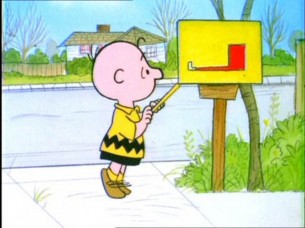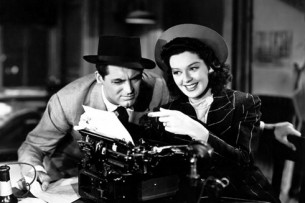In another life I spent more than a few years writing film reviews and essays of new and old, classic and infamous, good and bad films for various websites and any press outlets that would have me.
Recently I had the chance to revisit my old passion when it came time to produce a research paper in one of my classes in the Film department at San Jose State University. What follows is that research paper and given this past year of Rossie O’Donnel’s incredibly flippant impression to the flame up around Don Imus (why are you hovering over his name? Do you really need a hyperlink?) to just tons of insanity, it’s clear to me the topic of my paper is timely to the discussion and I thought it was an interesting enough topic to post here.
or
Why Doesn’t Anyone Look Like Me?
Teens films came into their own in the 1950s but they’ve only become truly representative of the teenage cultural landscape until fairly recently, arguably making leaps and bounds at an accelerated pace in the last ten years with films like 2000’s “The Debut”, 2002’s “Better Luck Tomorrow” and ultimately culminating in 2004’s “Harold and Kumar go to White Castle,” the stoner comedy that did more to tear down conventional norms and dismantle stereotype then any other film before or since.
In this class we have, over the course of the semester, we have “analyzed how motion pictures have depicted teenage culture throughout history and in a number of cultural contexts,” however we have overlooked one major cultural context as we journeyed through the 1950s to today.
What has been lacking is any portrayal of Asian-American’s on screen. We did have “Crazed Fruit,” a New Wave Japanese film that looked at adolescence and coming of age, but it looked at growing up in Japan from a Japanese perspective and had little to do with American culture or the Asian teenager growing up in America.
For the most part, Asian characters have been caricatures of the real thing in films such as the Charlie Chan franchise, in subservient roles such as in films like “Short Circuit” or shows like “Happy Days,” diluted icons to be oversimplified and made digestible for a mainstream white audience such as in the film “The Karate Kid” or on the show “Kung Fu,” or they are walking stereotypes obsessed with sex, western culture and mathematics on shows like “Seinfeld” and films like “Sixteen Candles.”
As a whole, fully realized and developed representations of Asian-American teens, even Asian-Americans in general for that matter (how many times have we heard Jackie Chan complain of the offers he gets for roles or for that matter how many Asian-American’s do we see on screen that are not women on white men’s arms?), have not existed in the mainstream.
In what follows I will examine the portrayal of Asian-American’s in cinema and chart the progression of the portrayal of this culture in the larger subculture of teen films as defined in the class using 2000’s “The Debut”, 2002’s “Better Luck Tomorrow” and 2004’s “Harold and Kumar go to White Castle,” as examples to illustrate my point.
Just as the world was ringing in the new millennium a little film from a collaboration of ethnic filmmakers was setting out to promote and release their film, appropriately titled “The Debut.”
The story was a fairly simple telling of a pair of Pilipino-American teenagers coming of age in San Francisco and focused on one night in the life of high school student Ben Mercado (Dante Basco, of “Hook” fame).
Ben like many Asian-American’s was trying to assimilate in the MTV dictated culture that surrounds him and would rather play basketball, listen to hip-hop, go out with his friends and avoid at all costs his family’s traditional ways and cooking. So when his sister’s traditional coming of age Debut party comes around, it becomes one night of discovery and cultural battles that force Ben to examine who he is.
Pretty much a by the books story arc of alienation and coming to terms with who you are when growing up, but it was monumental for the progression of Asian-American’s on scene by showing that there are issues that Asian-American’s deal with that are just as important as the issues that Tom Cruise, Kid n’ Play and John Travolta dealt with in other mainstream films.
This film opened the door to the idea that Asian-American teens also deal with the same alienation and coming of age that white teenagers do and as it became the first Pilipino-American film it also proved through its grassroots campaign that there was an audience for teen films that included Asian-American’s in the discussion.
It was a small but important step in opening the door and open the door it did, because two years later newly established MTV Films was looking to sign their first film as a production house and distributor and selected Justin Lin’s “Better Luck Tomorrow” to lunch their label.
It was a bold move on the part of MTV Films and many questioned if they were making the right move, most famously the story goes that after its premier at Sundance, and just before MTV Films picked it up, many in the audience lambasted the director and producers for portraying Asian-Americans on the screen in such a light. Some wondered why they had to be shown in such harsh light and others questioned if it was ethical and even moral to show them in negative ways that were less than ideal and accused the director of being irresponsible to his culture.
One wonders if these same outspoken detractors would lay the same claims at the feet of similar films staring white teenagers, such as in “American History X,” or black teenagers, for example “Menace II Society”
As I’ve only hinted at thus far, the plot did cast Asian-American’s in a brutal light, by turning the accepted ideal of the Asian-American overachiever with a laser-like fix on college entrance exams and quadratic equations into a criminally fascinated and sometimes violent teenager on the verge of entering adulthood and fighting to define it on there terms.
The film harkened back to the violent Caucasian teenagers of rebellious 1950s teenage films like “Rebel without a Cause” and recast the players and moved beyond the stereotype to ask: Aren’t Asian-American’s just like everybody else? Why should Asian-American’s on film be any different? And isn’t this just as valid as any other teleplay of white or black teenagers?
“Harold and Kumar” built on the progress that “Better Luck Tomorrow” had made in turning the Asian-American stereotype on its head two years after that film had come and gone from theaters and the cinema’s collective debates. The film even managed to work in a reference to the previous film, when a bully taunts Harold (John Cho, who also stared in “Better Luck Tomorrow”) by referencing the title of that film.
Right from its first scene it is established that this is not going to be your average teen film with the introduction of white males that exit the film like any other comedy of this flavor, but then the camera doesn’t follow them, it stay on Harold. And it becomes a teen movie that for the studio will make money, but for the community will make stride, and while the characters may be two 20-something roommates on the road track to careers and midlife crisis, the audience is clearly the teenager.
It’s surprising to learn that it took two white men to helm the project and stick to their guns against studio pressure for ethnic casting for the leads, but regardless of that, “Harold and Kumar” was loaded with clever jabs at stereotypes, for instance just before the end credits, caricatures of a man in a turban and another in a traditional straw hat are shown on a wanted poster. In another scene the film “Sixteen Candles” is discussed, which has a very stereotypical portrayal of Asians and is cleverly contrasted, for those familiar with the film, to the Asian face we see in this film nearly 20 years later.
At another point, Kumar goes into a speech about the American dream and how it is their right and duty to get the food they seek and devour it in the name of every ancestor and minority that has struggled to be equal with the accepted mainstream majority. Harold and Kumar’s strife and desires are no less worthy of a film than the white men that peeled out of the lobby in the opening credits.
This attacks societies accepted norms of different people and causes an audience who has just spent nearly two hours with these characters to reflect and rethink their notions of what they think of Asian-Americans.
In many scenes the image of the studious Asian-American is turned upside down with wild parties and rambunctious exploits and in others the manly dominate white males are recast as weak effeminate men that puff their chest at any threat to their dominance.
At the time the film became a box office boon for the studio, but in hindsight, “Harold and Kumar” is more than another stoner film, like Cheech and Chong before them, Harold and Kumar challenged societies accepted norms and through means of easily digestible and packaged delivery got in people’s faces about what they believe and the stereotypes they carry with them about Asian-American’s.
These films collectively have gone a long way in putting Asian-American’s on the screen and giving these teenagers a familiar face and teen movies in general a more accurate representation of the current American landscape.
Today it is becoming more common to see Asian characters in films, if only in minor roles at the moment, but at least we are speaking now next to the white leads instead of just serving them lunch or waiting to fix their girlfriend’s computer before the big dance.
There is still a long way to go. As I have shown here, the truly milestone films have only shown up once every two years and since 2004 there have been no major Asian-American’s on TV or Film. Hopefully that will change as the idea of Asian-American’s in media become more of the norm than exception among studio project proposals and as young Asian-American teenagers of today go on to become the adult Asian-American consumers of tomorrow.


